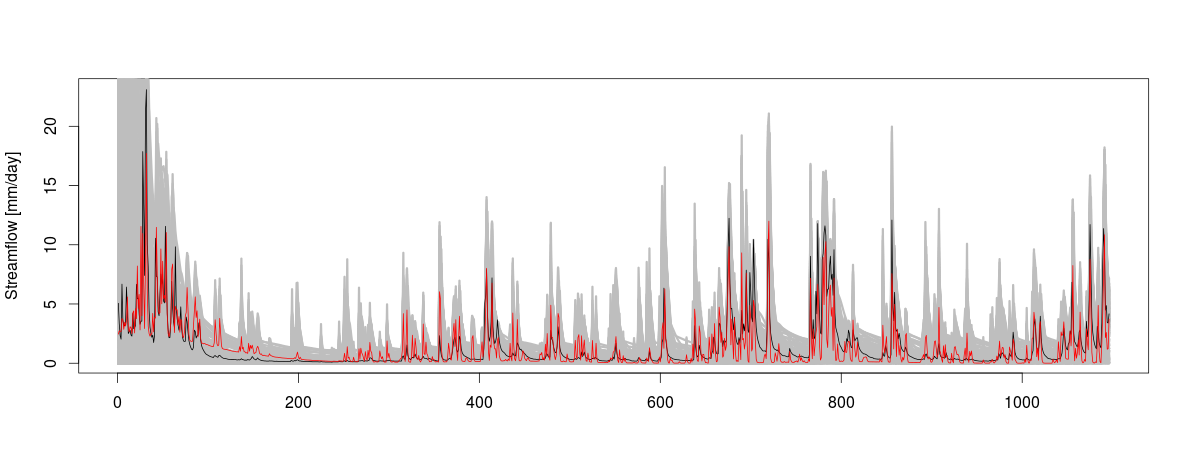The use of GRACE data for hydrological models to quantify the terrestrial water balance is a way to approach the large body of unknown knowledge of the water storage function. While the use of models and meteorological data helps to estimate most of the water balance components with some reasonable confidence, the quantification of the storage is very difficult, and such supporting data is clearly improve the estimations particularly in large basins. Sooner or later, in the line of water balance estimation at large scale basin, the use of GRACE will be my research agenda. I came across to this paper which shows some approach how to include the GRACE data in the basin water balance modelling. The abstract reads as:
"Groundwater is an increasingly important water supply source globally. Understanding the amount of groundwater used versus the volume available is crucial to evaluate future water availability. We present a groundwater stress assessment to quantify the relationship between groundwater use and availability in the world’s 37 largest aquifer systems. We quantify stress according to a ratio of groundwater use to availability, which we call the Renewable Groundwater Stress ratio. The impact of quantifying groundwater use based on nationally reported groundwater withdrawal statistics is compared to a novel approach to quantify use based on remote sensing observations from the Gravity Recovery and Climate Experiment (GRACE) satellite mission. Four characteristic stress regimes are defined: Overstressed, Variable Stress, Human-dominated Stress, and Unstressed. The regimes are a function of the sign of use (positive or negative) and the sign of groundwater availability, defined as mean annual recharge. The ability to mitigate and adapt to stressed conditions, where use exceeds sustainable water availability, is a function of economic capacity and land use patterns. Therefore, we qualitatively explore the relationship between stress and anthropogenic biomes. We find that estimates of groundwater stress based on withdrawal statistics are unable to capture the range of characteristic stress regimes, especially in regions dominated by sparsely populated biome types with limited cropland. GRACE-based estimates of use and stress can holistically quantify the impact of groundwater use on stress, resulting in both greater magnitudes of stress and more variability of stress between regions."
some references (to be updated ):
Van Dijk, A. I. J. M., L. J. Renzullo, and M. Rodell. "Use of GRACE terrestrial water storage retrievals to evaluate model estimates by the Australian water resources assessment system." Water Resour. Res 47 (2011): W11524.
Kirk Zmijewski and Richard Becker, 2014: Estimating the Effects of Anthropogenic Modification on Water Balance in the Aral Sea Watershed Using GRACE: 2003–12. Earth Interact., 18, 1–16. doi: http://dx.doi.org/10.1175/2013EI000537.1
Deus D, Gloaguen R, Krause P. Water Balance Modeling in a Semi-Arid Environment with Limited in situ Data Using Remote Sensing in Lake Manyara, East African Rift, Tanzania. Remote Sensing. 2013; 5(4):1651-1680.
van Dijk, A. I. J. M., et al. "A global water cycle reanalysis (2003–2012) merging satellite gravimetry and altimetry observations with a hydrological multi-model ensemble." (2014).
Eunjin Han, Wade T. Crow, Christopher R. Hain, and Martha C. Anderson, 2015: On the Use of a Water Balance to Evaluate Interannual Terrestrial ET Variability. J. Hydrometeor, 16, 1102–1108. doi: http://dx.doi.org/10.1175/JHM-D-14-0175.1
Scanlon, B. R., L. Longuevergne, and D. Long (2012), Ground referencing GRACE satellite estimates of groundwater storage changes in the California Central Valley, USA, Water Resour. Res., 48, W04520, doi:10.1029/2011WR011312.





